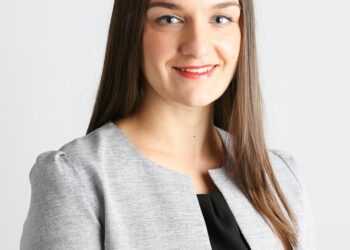In a recent podcast, Colonial First State senior technical services manager Linda Bruce explained that with the work test being moved out of the SIS regulations and into the Tax Act, this means from 1 July the ATO will now be the regulator responsible for administering the work test.
While the work test will no longer apply from 1 July for those aged 65 to 74 in terms of non-concessional contributions, individuals will still need to meet the work test where they want to claim a deduction for a personal super contribution.
In order to meet the work test from 1 July, a member must be gainfully employed for at least 40 hours during a consecutive 30-day period in the financial year the contributions are made.
Ms Bruce explained that up until 30 June this year, super funds have relied on work test declarations from members for the acceptance of voluntary super contributions.
“It isn’t really possible for the super fund to prove whether the declaration is true, so they just relied on that member declaration. However, going forward, that declaration will no longer be made to the super fund, it will be made to the ATO,” she noted.
“The ATO has very good visibility of the income declared in a client’s individual tax return or their related entity tax return.”
Where someone declares that they have met the work test, Ms Bruce said the the ATO might look to see if there is is salary, wages, allowances or reportable fringe benefits for that individual.
“In the case of a self-employed individual such as a sole trader, the ATO will look for information on whether or not this person has personal service income or whether the person has included anything in the business and professional items schedule that itemise the profit and expenses in the individual tax return,” she said.
“For the partner of a partnership that runs a business, the partnership needs to lodge a separate return so the ATO might cross check the partnership return, and look for the partnerships’ profit, expenses, and the distributions made to this particular partner.”
Ms Bruce explained that there may be practical issues that arise where there are more unusual circumstances for the client.
If an employee is taking unpaid leave, for example, they may still be able to meet the work test but they won’t have any income reported, she explained.
Ms Bruce noted that there is still some level of uncertainty regarding whether an employee taking paid or unpaid leave is gainfully employed. However, both APRA and the ATO have previously suggested that the individual would be considered to be gainfully employed.
APRA stated in SPG 270, which was issued back in 2013, that an individual would be considered to be gainfully employed in this circumstance, provided they have an employment contract, she said.
However, APRA removed this paragraph in a newer version of the guidance, she said.
“They did privately confirm with industry that it is still their view that taking leave, paid or unpaid, would mean that the person is still gainfully employed. There’s just nothing that we can point to if anyone wants a reference from APRA — there is nothing current,” she explained.
“The ATO, to my knowledge, has never published anything publicly but they did confirm this privately through a non-binding channel. What they said was very similar to APRA.”
Ms Bruce said the ATO implied, similarly, that if there is an employment contract that specifies the ordinary work hours that an individual is required to work, then a person taking paid or unpaid leave is still gainfully employed and will therefore likely meet the work test.
She warned that there is still a small risk the ATO may later come out with a different view.
Speaking in the same podcast, Colonial First State head of technical services Craig Day said for clients in this sort of situation it would be fairly simple for the client to provide evidence of their employment arrangement.
“So there might be a call from the ATO [where the client then] provides that evidence,” said Mr Day.
However, there are other types of situations which may be more risky for the client, he said.
Where a client is receiving passive distributions from a related party entity while they’re still working for that entity, it may be difficult to prove that they’ve met the work test, he cautioned.
“I would imagine that we might have a problem here in terms of justifying it. That comes back to the practical issues in terms of how the ATO is going to administer this work test,” said Mr Day.
Ms Bruce explained that after the ATO published its ‘Crackle’ case study, there has been uncertainty around whether a member can meet the work test where they are not employed by an entity but receive trust distributions or dividends from a company as a shareholder.
“The ATO released the Crackle case study to assist SMSF trustees in determining whether a member’s gainful employment arrangement has ceased for the purposes of meeting a condition of release,” she explained.
“In this case study, Charlie used to work for a family trust as an employee and all of sudden that employment arrangement was terminated and Charlie is no longer an employee of the trust. So there’s a termination and he’s over age 60, so it sounds like Charlie has met a condition of release.”
However, the ATO states that it is very unusual for a business like Crackle to allow someone who is not employed or contracted to assist in running the business, without an agreement or understanding in place.
The ATO explains in the case study that if Charlie’s work leads to increased turnover for the business, resulting in larger trust distributions or a disproportionate increase in dividends, the Commissioner could take a view that the arrangement under which Charlie was ‘gainfully employed’ has not ‘come to an end’ as he is still receiving ‘gain or reward’ from distributions from the Crackle Discretionary Trust.
“Therefore Charlie is not able to satisfy a condition of release,” said Ms Bruce.
“That’s the same gainful employment definition. So, if we apply the rules from the ATO’s comments, does that mean that a client in Charlie’s situation that works for this related entity but merely receives passive distribution from the trust or or company, is gainfully employed for the purpose of meeting the work test, and therefore is able to claim a tax deduction for personal contributions made?”
Ms Bruce said this remains unclear at this stage until the ATO provides further clarity.
Mr Day said it is important to remember that this case study not a binding piece of advice from the ATO.
“For someone in this Crackle case study situation, if they simply say ‘I’m receiving trust distributions, and because of the Crackle case study on your website, I’m gainfully employed’, that’s probably not going to be met with enthusiasm by the ATO I’d suggest,” Mr Day warned.
“How would you apply that [case study] to say that ‘yes I’m gainfully employed’. It would be an aggressive approach to take. It’s likely to raise a few questions.”
However, there may be other scenarios, he warned, which “will not be met with enthusiasm by the ATO”.
Where a client is receiving passive distributions from a related party entity while they’re still working for that entity, it may be more difficult to prove that they’ve met the work test, he cautioned.
“I would imagine that we might have a problem here in terms of justifying it. That comes back to the practical issues in terms of how the ATO is going to administer this work test,” said Mr Day.
“That would be an aggressive approach to take and would likely raise a few questions.”



Hi Reality is,
I have not seen this from a superannuation contributions perspective. However, the point of the article is that from 1 July the ATO will be administering the work test for tax purposes. Therefore, the ATO could very easily data match other sections of the client’s tax return to check whether there is any evidence of employment income, such as salary and wages etc. If someone 67-75 claims a deduction for a personal contribution but there is no evidence and the work test exemption is not in play as the client has a total super balance of over $300k, then I think its highly likely the ATO will want to question the validity of the deduction being claimed going forward.
Hi Craig, years ago the ATO said it already data matches Super Conts over age of work test required and if employment also ticked on the personal tax return.
Doesn’t seem like a big change to me ? Sure they have to have met the work test, have proof etc I thought that was always the case, besides signing the super form too. Which would be a lie if they didn’t meet the work test.
Can anyone tell us of any incident when someone was actually pulled up for the work test and contributions via the ATO actively checking ?